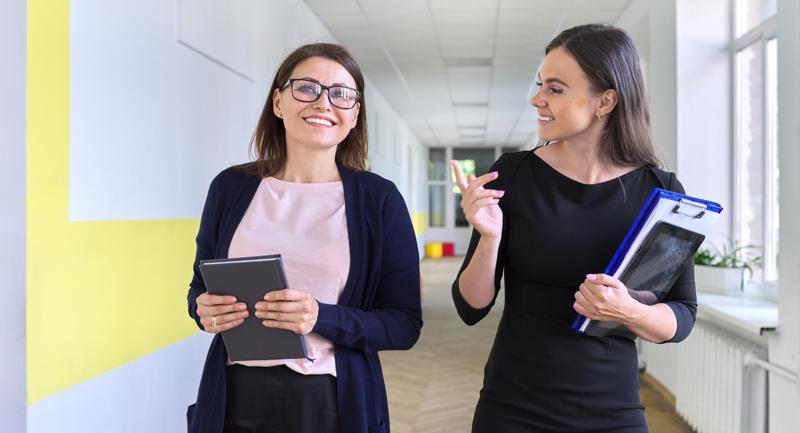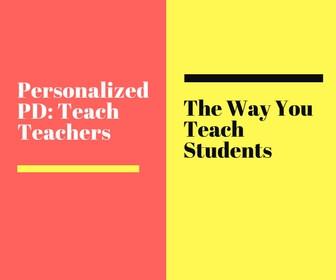Among the many challenges the COVID-19 pandemic has exacerbated for education is the balance of work and home life. Teachers who now care for their own children and family members while working from home are trying to figure out how to simultaneously be caretakers and do their jobs—including engaging in professional development opportunities.
Yet, this challenge of how to be a caretaker while also participating in PD, which often takes place outside of school hours, is not new for educators. It has been a core question within the Technological Innovations for Inclusive Learning and Teaching (tiilt) fellows program I lead at Northwestern University. The program supports PD experiences that engage teachers and their families to highlight how family members can be an asset to educators’ learning. This program emerged out of a teacher’s concern that she would not be able to participate in other PD experiences we offer because she was a primary caretaker for her children.
How the Program Works
Based on our team’s prior work in intergenerational making, my colleagues and I knew that family participation can offer more effective learning and stronger familial relationships (Jones, Perez, Lee, Furuichi, & Worsley, 2019; Roque, 2020). In the tiilt program, educators participate in a free one-week synchronous experience about maker education with any available family members.
The first cohort of teachers, which met in the summer of 2019, included four elementary school teachers and one middle school teacher. Three electives teachers brought their own children, a humanities teacher brought her niece and her nephew, and a mathematics teacher came solo. The children ranged in age from 2 to 10 years old.
The group designed maker-oriented activities for their learners through whole group and small group discussions and take-home activities. Families played different board games and card games and experimented with digital fabrication and crafting technologies, such as laser cutters, 3-D printing pens, vinyl cutters, and hot glue guns. These activities inspired teachers and their families to design their own games based on a family narrative or story as the final project. Then, facilitators provided ongoing support in teachers’ classrooms as two of the teachers led an after-school program and one teacher held an in-class game design unit.
Keeping It in the Family
Research shows that professional development should be focused on content, incorporate active learning, support teacher collaboration, use models and modeling, provide expert support—including opportunities for feedback and reflection—and offer ongoing follow-up opportunities (Darling-Hammond et al., 2017). Though none of these best practices explicitly mention family member involvement, our program revealed several ways that family members can contribute to teachers’ learning process.
Space for active learning: Teachers and their family members spent most of their time doing hands-on discussion and crafting. The family members, particularly the younger ones, added levity, play, and laughter to the process, serving as a reminder that a learning experience for students of any age needs to be fun and engaging. Those spontaneous moments of play sometimes made group discussions a challenge and was another note for teacher planning that in maker spaces, boundaries for indicating when and where play is appropriate can be helpful.
Support for teacher collaboration: Teachers primarily worked with family members, but also collaborated with other teachers in thinking about their long-term plans with making. One pair of teachers used the weeklong session to plan a Harry Potter-themed after-school program.
Use of models and modeling: Program facilitators modeled ways to support making across age groups, including selecting age-appropriate technologies and materials for a given project and breaking up larger tasks into sets of smaller ones of varying complexity. Teachers were able to practice this process with all family members in the group, and one teacher noted that testing her ideas with school-aged children was a primary motivation for participating. Teachers had ideas that they thought their students might enjoy but wanted to try them out with a small group of learners before bringing them to the classroom.
Opportunities for feedback and reflection: Teachers reflected collectively and individually throughout their experiences, but there was an added depth to the reflection when family members were involved. These reflections, both in class and in teachers’ homes, offered complementary perspectives and observations. For example, a family member might let a teacher know that they do not understand how to use something that a teacher designed. Alternatively, teachers might see some of the children’s design ideas and add elements of that idea into their activities.
Turning Constraints into Assets
Incorporating teachers’ families into PD repositions the potential constraint of family responsibilities as an asset for teacher learning. Beyond the convenience factor for educators, family-friendly PD has a lot to offer by adding playfulness and additional learning partners and reconciling teachers’ different identities as parents and educators. These benefits can be relevant across age groups, though younger family members tend to be most capable of adding a feeling of levity, while older family members can offer more complex evaluations of activity designs.
Similarly, for teachers who don’t have their own kids, observing how children think about projects or interact with family members can translate to more family-friendly learning activities for their students, which is especially relevant for the current at-home, virtual learning set-up in many districts. Some of our participants looked forward to getting feedback from other people’s children, who were closer in age to the children that they taught.
Even so, a mismatch between the ages of children participants and the ages that educators teach is OK. In our session, there were many preschool children, and though none of the teachers taught that age group, the children forced teachers to break down the process into manageable chunks, which helped their own conceptualizing of the activity.
The COVID-19 pandemic is forcing teachers to juggle challenges that affect their home life and their professional practice. Instead of running from these constraints, why not identify and reframe factors that limit teachers’ participation, such as financial or bureaucratic barriers? Why not use perceived challenges to advance new forms of effective teacher professional development?
Marcelo Worsley is an assistant professor of learning sciences and computer science at Northwestern University. He directs the Technological Innovations for Inclusive Learning and Teaching (tiilt) lab, which collaborates with students and teachers around the world and is open to partnerships with school districts.








